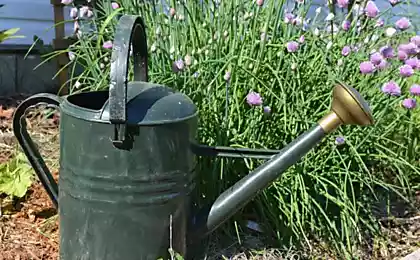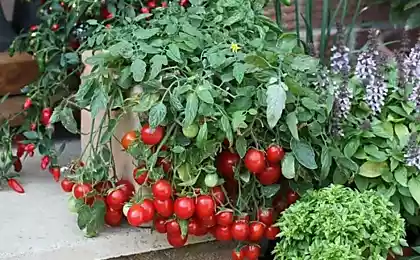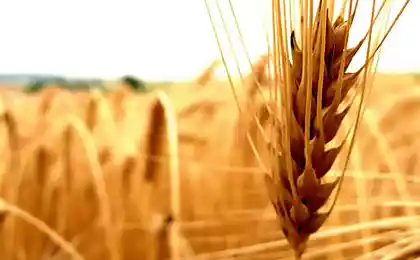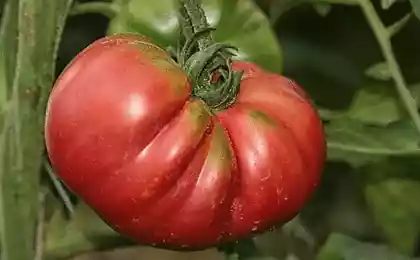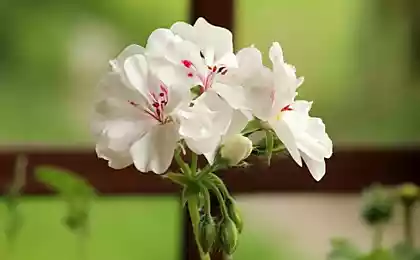210
Watering and feeding tomatoes
More popular vegetable crops than tomatoes and cucumbers, the workers of the dacha front, perhaps, not found. There are no equals in summer or winter - neither in beds nor in glass jars. Therefore, you can understand the zealous attitude of summer residents to the appearance, flowering and yield of these vegetables in neighboring areas.
Every year at the height of the season, the most topical questions again become “How often to water?” and “How best to feed?”, so that the harvest is for everyone. It is not superfluous to remember everything and put it on shelves.
How often do I see summer residents diligently watering all crops from a hose in order to squeeze as much as possible out of the time-limited evening watering “in 2 days on the third”. And the heart is always squeezing. That's not right! How's that right? Know what a tomato likes, what it needs, and what environment it is comfortable in.
What we need to know Tomatoes do not like drought or excess water.. The most favorable combination for them is the moisture of the soil under the bush of 85-90%, and the humidity of the air is about 50%. That is, warm, dry, but on sufficiently moist soil. People say, “Tomatoes like a dry head, but wet feet.” If there is not enough moisture (you can immediately see the plant), the leaves sag, twist, buds and ovaries can crumble. If moisture is in excess, tomatoes begin to hurt, and immature fruits burst and turn black.
The correct watering mode is important. After planting in the ground, seedlings are well watered and left alone for 2-3 days (you can longer), then watering is produced 1-2 times a week abundantly, but taking into account the variety, size and weather. For short young bushes, 2-3 liters will be enough, while watering adult giants will require at least 10 liters. Many summer residents generally recommend watering once every 5-7 days, even in hot weather. But here, as everywhere, the principle of expediency should operate: if we see that the leaves are hanging, we take and water!
Watering tomatoes is best in the early morning. To the root. After absorbing water, the soil must be loosened shallowly.
Water for irrigation is best defended and heated. It is great if there is a tank on the site that can be painted with black paint so that the water in the sun warms up better. Watering tomato bushes from above, on the leaves, and even cold water from the hose is at least half the crop.
The ideal option is a drip watering. If you have the opportunity to organize it, the tomato will only say thank you: the soil will be moistened all the time, and no heat is terrible.
There are many opinions here too. The most "travel" versions:
What we need to know Nitrogen fertilizers very strongly stimulate the growth of green mass (stem, leaves, stepsons), and this leads to the fact that the ripening of fruits slows down. Therefore, swelling "nitrogen" in the first feeding is not the most sensible decision.
Phosphoric-potassium fertilizers You should give preference if you want to get tomatoes with a low nitrate content.
Potash fertilizer. The best option for tomatoes is ash or potassium sulfate. Potassium chloride will only harm - chlorine acts on tomatoes depressingly.
Microfertilizers. The most important for tomatoes are magnesium and boron. Boron is especially necessary at the time of flowering (noticed that often flowers and ovaries can just fall? it is from a lack of boron. And it is enough 1-2 times to spray the leaves and flowers with a solution of boric acid in a concentration of 1 g per 1 liter of water to close the problem.
Organic fertilizers.Don't say too much. Infusion of bird droppings or mullet, fermented green grass ... Remember the advert for apple juice: “Have you ever seen me sprinkle apples?” So here is the case when such a “disgust” is worth its weight in gold. How to use organic fertilizers, probably everyone knows. Compost and humus can mulch tomatoes - this is "2 in one bottle": both healing mulch and protection from diseases. Organic infusions are good to make liquid fertilizers.
Four recipes for the whole summer season
And finally - a new interesting recipe for tomato feeding. I found it on the Internet, I didn’t remember the author (but thank you very much!).
Magic balm cocktail (The title is one worth it!!)
Method of use and dose - 1 liter of a cocktail per bucket of water (1:10), watering once every 7-10 days under the root.
So far, of all the components, I have 2 shovels of ash. But I think the recipe will work! Because yeast I have already tried as an ant remedy in the country, and as a stimulant of flower growth - and ... super!
Source: www.7dach.ru
Every year at the height of the season, the most topical questions again become “How often to water?” and “How best to feed?”, so that the harvest is for everyone. It is not superfluous to remember everything and put it on shelves.
How often do I see summer residents diligently watering all crops from a hose in order to squeeze as much as possible out of the time-limited evening watering “in 2 days on the third”. And the heart is always squeezing. That's not right! How's that right? Know what a tomato likes, what it needs, and what environment it is comfortable in.
What we need to know Tomatoes do not like drought or excess water.. The most favorable combination for them is the moisture of the soil under the bush of 85-90%, and the humidity of the air is about 50%. That is, warm, dry, but on sufficiently moist soil. People say, “Tomatoes like a dry head, but wet feet.” If there is not enough moisture (you can immediately see the plant), the leaves sag, twist, buds and ovaries can crumble. If moisture is in excess, tomatoes begin to hurt, and immature fruits burst and turn black.
The correct watering mode is important. After planting in the ground, seedlings are well watered and left alone for 2-3 days (you can longer), then watering is produced 1-2 times a week abundantly, but taking into account the variety, size and weather. For short young bushes, 2-3 liters will be enough, while watering adult giants will require at least 10 liters. Many summer residents generally recommend watering once every 5-7 days, even in hot weather. But here, as everywhere, the principle of expediency should operate: if we see that the leaves are hanging, we take and water!
Watering tomatoes is best in the early morning. To the root. After absorbing water, the soil must be loosened shallowly.
Water for irrigation is best defended and heated. It is great if there is a tank on the site that can be painted with black paint so that the water in the sun warms up better. Watering tomato bushes from above, on the leaves, and even cold water from the hose is at least half the crop.
The ideal option is a drip watering. If you have the opportunity to organize it, the tomato will only say thank you: the soil will be moistened all the time, and no heat is terrible.
There are many opinions here too. The most "travel" versions:
- 3 times during the summer season,
- 4 times a season,
- regularly, every 2 weeks.
What we need to know Nitrogen fertilizers very strongly stimulate the growth of green mass (stem, leaves, stepsons), and this leads to the fact that the ripening of fruits slows down. Therefore, swelling "nitrogen" in the first feeding is not the most sensible decision.
Phosphoric-potassium fertilizers You should give preference if you want to get tomatoes with a low nitrate content.
Potash fertilizer. The best option for tomatoes is ash or potassium sulfate. Potassium chloride will only harm - chlorine acts on tomatoes depressingly.
Microfertilizers. The most important for tomatoes are magnesium and boron. Boron is especially necessary at the time of flowering (noticed that often flowers and ovaries can just fall? it is from a lack of boron. And it is enough 1-2 times to spray the leaves and flowers with a solution of boric acid in a concentration of 1 g per 1 liter of water to close the problem.
Organic fertilizers.Don't say too much. Infusion of bird droppings or mullet, fermented green grass ... Remember the advert for apple juice: “Have you ever seen me sprinkle apples?” So here is the case when such a “disgust” is worth its weight in gold. How to use organic fertilizers, probably everyone knows. Compost and humus can mulch tomatoes - this is "2 in one bottle": both healing mulch and protection from diseases. Organic infusions are good to make liquid fertilizers.
Four recipes for the whole summer season
- For 10 liters of water 0.5 liters of liquid mullet + 1 tbsp of nitrophosca (0.5 liters for each bush)
- For 10 liters of water 0.5 liters of chicken litter + 1 tbsp. spoon of superphosphate + 1 tsp. spoon of potassium sulfate (0.5 - 1 liter per bush)
- For 10 liters of water 1 tbsp of potassium humate + 1 tbsp of nitrophosca (5 l per 1 sq.m.)
- 10 liters of water 1 tablespoon of superphosphate (10 liters per 1 sq.m.)
And finally - a new interesting recipe for tomato feeding. I found it on the Internet, I didn’t remember the author (but thank you very much!).
Magic balm cocktail (The title is one worth it!!)
- bucket
- 2 shovels of ash
- 2kg yeast
- 3 l serum
- nettle
Method of use and dose - 1 liter of a cocktail per bucket of water (1:10), watering once every 7-10 days under the root.
So far, of all the components, I have 2 shovels of ash. But I think the recipe will work! Because yeast I have already tried as an ant remedy in the country, and as a stimulant of flower growth - and ... super!
Source: www.7dach.ru
Lion lunch. 12 dishes from the menu of Leo Tolstoy
The fleet of the Dubai police cost $ 6.5 million (video)
